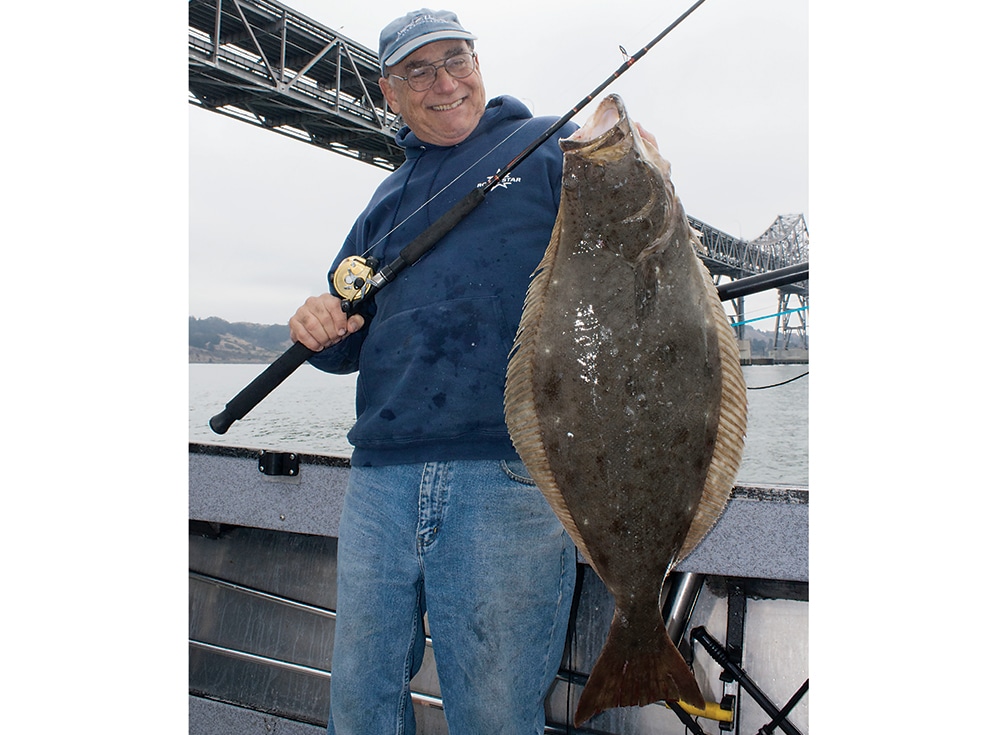
San Francisco Bay provides great fishing action in the shadow of one of the world’s great cities, making the halibut fishery and others available to a huge number of fishermen, right in their own backyard. Click though the images in the gallery for some impressive halibut catches.
Barndoor. Doormat. Flatty. These and other popular nicknames for California halibut draw a mental picture of a fish that, for the most part, lies around doing nothing.
Anglers who regularly target the halibut of San Francisco Bay know better. Although halibut do spend much of their lives lying on the bottom like manhole covers, they do become active and hunt. And like any predator, they do their hunting where conditions best suit their bottom-hugging lifestyle.
Finding halibut in the vast expanse that is San Francisco Bay can be a challenge. Much of the bay is soft-mud bottom in depths from 10 to 35 feet, which means that it’s all good halibut habitat. Well-known areas such as the Berkeley Flats, Treasure Island, the Alameda Rockwall, Paradise, Crissy Field and others are popular for both party and private boats, and when word of a bite gets out, it’s usually not hard to follow the fleet.
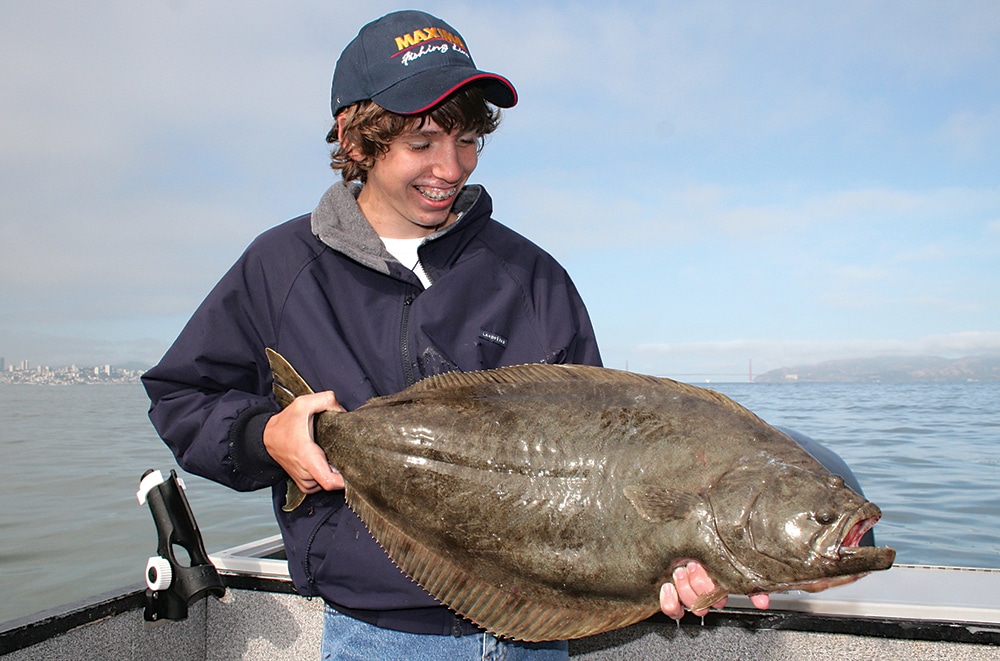
Get in the Zone
There are many times, however, when the fish are spread out, and it’s hard to find any organized bite. This is when private-boat anglers have an edge with their ability to explore and seek out small pockets of fish. Edge is the operative term here, because halibut often feed along some sort of transition zone or edge. Anywhere two types of habitat intersect — hard bottom and soft, shallow, and deep rocks and sand — provides conditions for these ambush feeders to sneak-attack their prey. Many of the common halibut grounds provide some sort of edge like this, whether it’s a shipping-channel ledge, bottom depression, or an abrupt change in depth or bottom composition like that found at Southampton Shoals. Astute anglers can use their charts, echo sounder, and their own eyes to find many other fishy areas where tidal movement, currents, and eddies help bring food to hunting halibut. Bridge abutments, jetties, pier pilings and rocky points are just a few visible signs that can indicate a transition zone worth investigating.
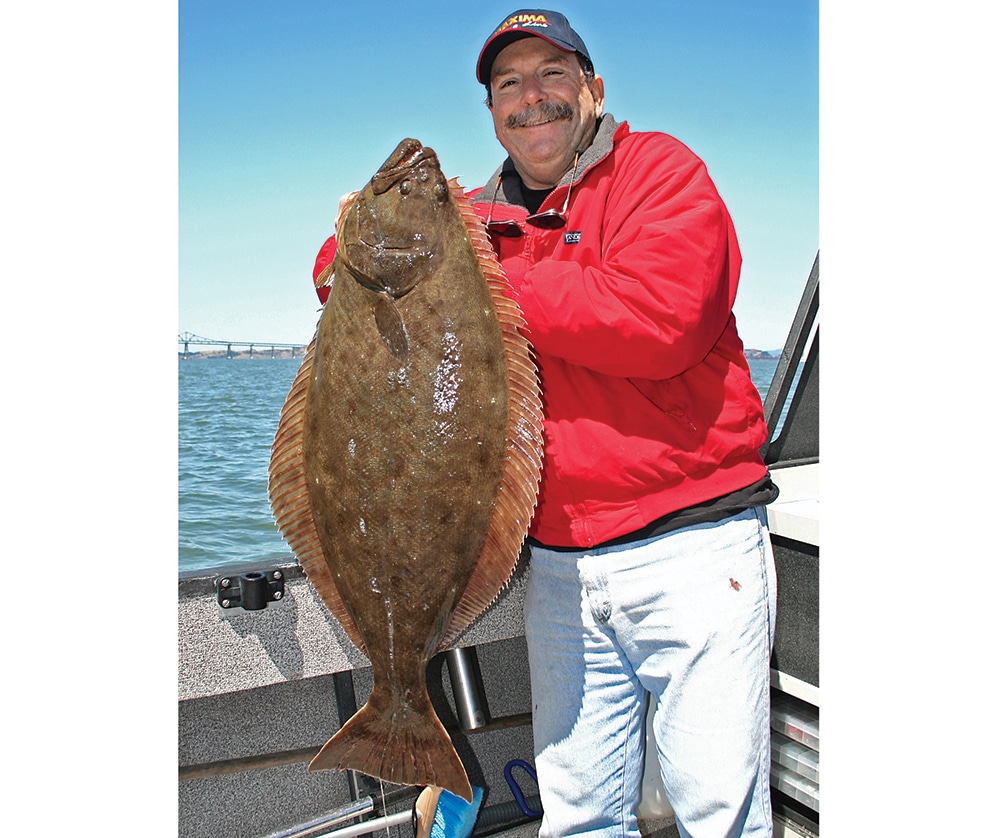
Time It Right
Halibut can be caught year-around in the bay, but it’s the influx of anchovies that really gets things going. This usually begins in May and lasts through summer. A little Internet research or a visit to a local tackle shop can dial you in with the where, when and how of the recent bite.
Water movement puts halibut in a feeding mood. However, the bay’s extreme tides often provide too much of a good thing and muddy up the water. For this reason, anglers focus on “halibut tides,” planning trips on days with minimal tidal swings.
Live-Bait Presentation
Most summer halibut fishing is drift-fishing live bait — usually anchovies — over productive bottom. Halibut can also be caught on shiner perch, small smelt, mudsuckers and other self-caught baits. The favored terminal rig is designed to keep the bait near (but not right on) the bottom as the boat moves along with the wind or current. We like to use a three-way swivel with a one-foot dropper for the sinker. Terminating this dropper with a snap allows for fast weight changes and makes it easy to remove the lead when running from spot to spot. Round sinkers up to 8 ounces cover most depths and conditions, and are less likely than other shapes to stick in the soft bay mud.
A 3- to 4-foot leader of 20-pound-test fluorocarbon and a light-wire live-bait hook — tied with a perfection loop —complete the drift rig. Hook size should be matched to the size of the bait, usually ranging from a No. 2 to 2/0. Hooking anchovies through the bottom jaw and out the top keeps the bait’s mouth closed and prevents the bait from fouling.
Be Ready for Subtle Bites
Sometimes, halibut smash drifted baits in a way that is impossible to miss. More often, however, bites are signaled by a subtle loading of the rod, as if something is just sitting on the bait. Watch your rod tip for changes as the lead weight bounces across the bottom. Many times, it’s just your bait or sinker momentarily catching. But this can also be the first indication you’ve got a customer. My family lives by the credo “swings are free,” so whenever this happens, we pick up the rod, wind down until we feel weight, and — if there’s a fish there — set the hook.
Trolling Tips
Slow-trolling dead baits with heavy sinkers — a technique commonly called “bounce balling” — has its advantages at times. Early in the season, when live bait isn’t readily available and the fish are spread out, trolling covers more water. Even when the live-bait bite is happening, it tends to stall for a few hours during slack tide. Again, trolling helps anglers cover ground and present their baits to more fish.
There’s no finesse to halibut trolling; it’s all about maintaining contact with bottom as you motor around at 1 to 2 knots. This means using a 12- to 24-ounce cannonball sinker attached to a three-way swivel by a two-foot dropper of heavy mono. Dead anchovies or herring are preferred (to reduce tangling), rigged to a 5-foot, 40-pound-test leader with a large dodger or flasher between the main line and the hook. Most anglers rig these baits with a treble “trap hook” to increase hookups. Tackle is fairly stout, with braided main line preferred to reduce resistance through the water and help maintain contact with the bottom. In addition to dead bait, many trollers succeed by pulling swimming plugs or plastic hoochies behind flashers.
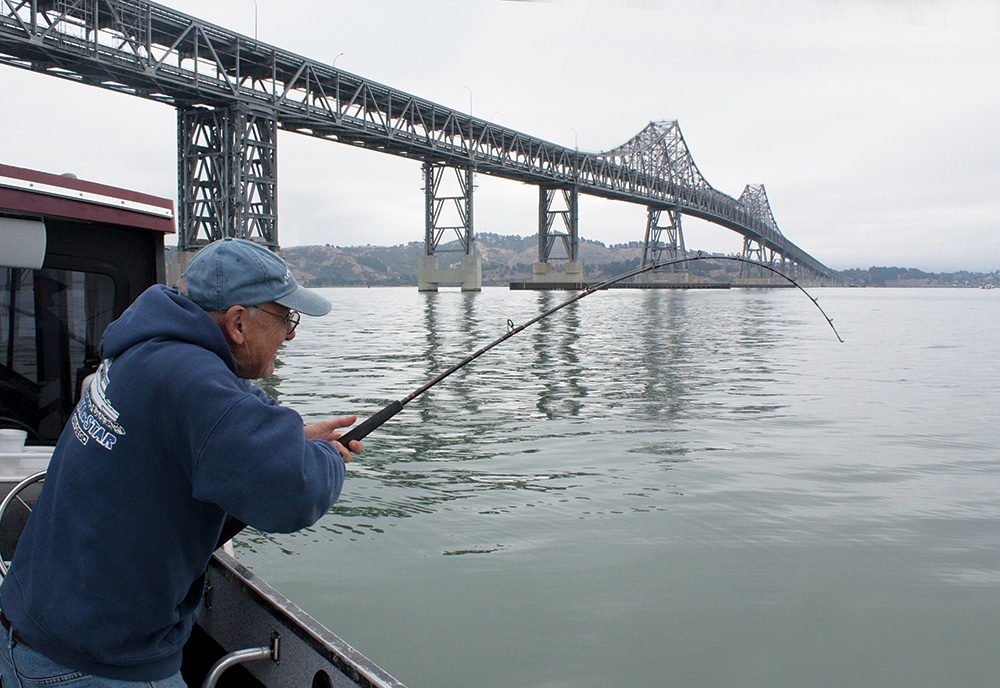
Finishing the Fight
When you hook up a halibut in San Francisco Bay, it might be a 22-inch keeper or a 40-pound monster. It’s sometimes hard to tell right away. Telegraphed through a graphite rod, these unusually shaped fish often feel like dead weight, interrupted by periodic violent head shakes and short runs. The heavier the weight and the stronger the shakes, the more likely you’ve got a trophy ’but on the line. “Easy does it” works best with halibut; it’s often possible to plane these flatfish toward the surface without too much fuss. It’s when they see the boat that all hell breaks loose. Calm nerves and a steady hand with the waiting net or gaff win this critical endgame. This is easier said than done when you first see the dark, carpet-shaped outline of a trophy halibut looming through the silted water.
Back off the drag a bit and be ready for a last dive toward the bottom. Be patient, and take the fish when it’s laid out flat, just under the surface.
I promise that once you experience this fishery, you’ll be hooked — no buts about it.
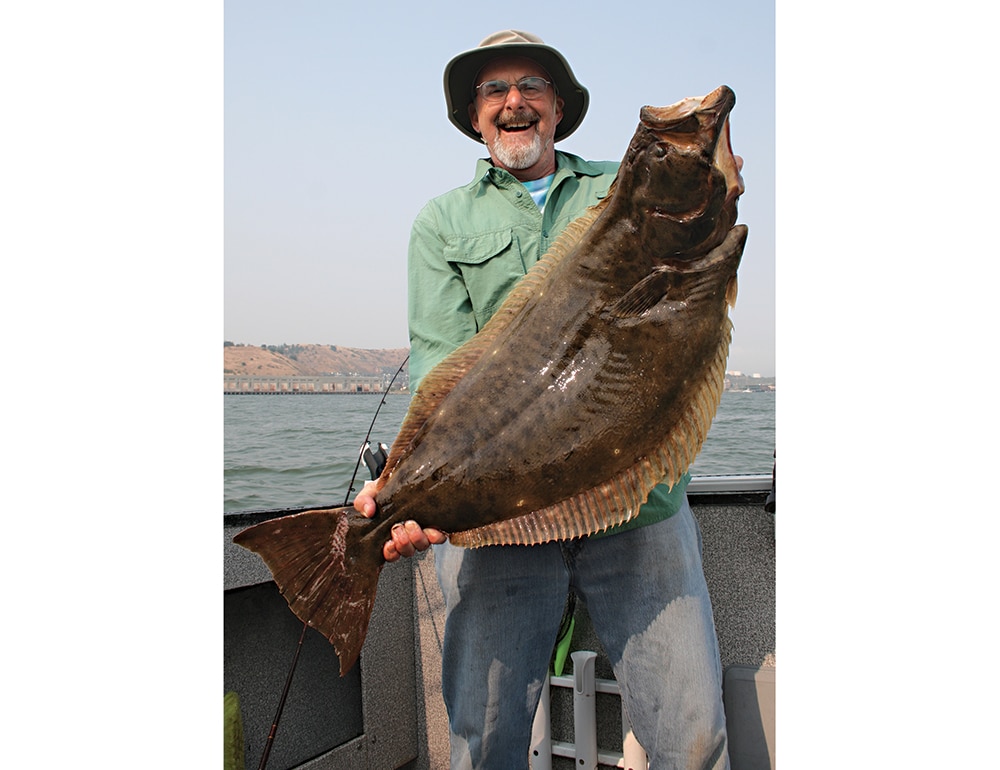
San Francisco Bay Halibut
What: California halibut from 22-inch keepers to 40-pound barndoors.
When: Peak fishing coincides with availability of live bait, usually beginning in May and running through summer. Trollers are able to catch some fish year-round.
Where: Accessible to private boaters launching from ramps and marinas throughout San Francisco Bay.
Who: Numerous party boats and six-pack charter operations are available throughout the Bay for those without a boat or for anyone who wants to learn the ropes.
Limit: Daily bag and possession limit is three fish, measuring a minimum of 22 inches.









